Knitting techniques
![]() I had picked up this book twice before and left it at the bookstore because of a design issue that bugs me. Yes, I'm fussy that way. The issue is the sepia colorization of the photos that make it hard to see the details; not a minor problem for me in a book that is all about teaching techniques. Fortunately, the photos are accompanied by illustrations that show even the finer points very clearly. I have to thank knitbuddies for making me pick up this book again and take it home with me.
I had picked up this book twice before and left it at the bookstore because of a design issue that bugs me. Yes, I'm fussy that way. The issue is the sepia colorization of the photos that make it hard to see the details; not a minor problem for me in a book that is all about teaching techniques. Fortunately, the photos are accompanied by illustrations that show even the finer points very clearly. I have to thank knitbuddies for making me pick up this book again and take it home with me.
Not that I can actually read the damn thing. Well, not yet at least. But this morning at breakfast I started to write down and look up some of the kanji in the "Before knitting" page. Little by little, I hope to figure out the basics.
もっと知りたい棒針編みのわざ!―編み物教室の現場から
From an actual knitting class
by 千枝, 小瀬
104 pages
ISBN 4579111125
Entirely in Japanese, including the table of contents.
I don't really care for the models inthe book, but I look at them as a way to illustrate the knitting and finishing techniques.
I really can't imagine ever wanting to knit something like this. Love the color, though. A lot of the Japanese knitting books are really too frou-frou for me, including those of the Prince of Knitting who has a baroque sense of style.
Good luck figuring out the table of content!
This page is called Before Knitting (I think) and has really captured my attention. It gives directions on how to read the charts and instructions. I find it really smart that each chart is shown in two versions:
a) the way it looks from the front of the work
b) the way it is knitted
"a" is the same as the charts we see in western books. "b" shows the stitches not as they appear, but as they are actually knitted, so the back rows are reversed compared to "a". The beauty is that this way you don't have to mentally convert one symbol into its opposite when you are knitting a back row. If I misunderstood this page, somebody please correct me, OK?
This looks like an explanation of short rows.
A rather scary sleeve chart, no?
Additional information about this book at Knitbuddies, where you can see also many more Japanese craft books.
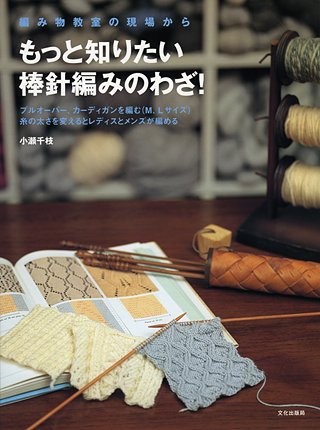
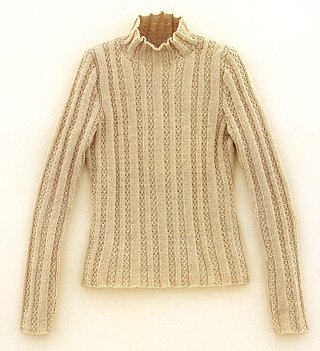
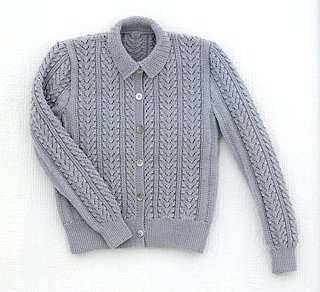
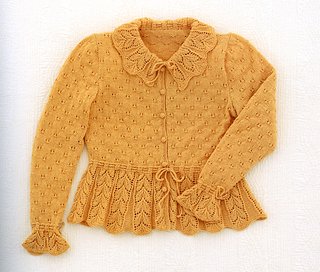
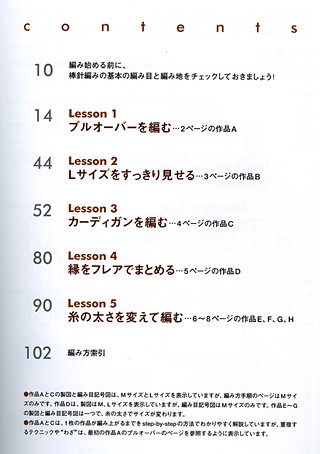
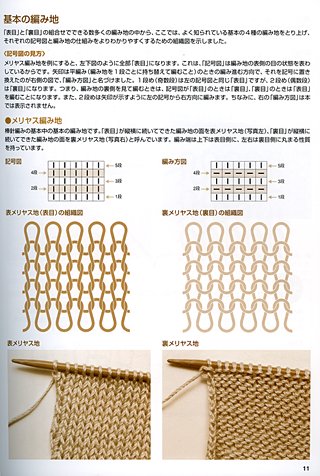
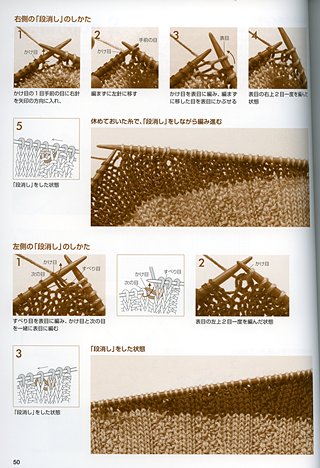
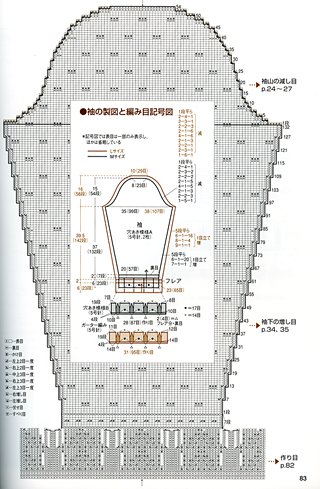
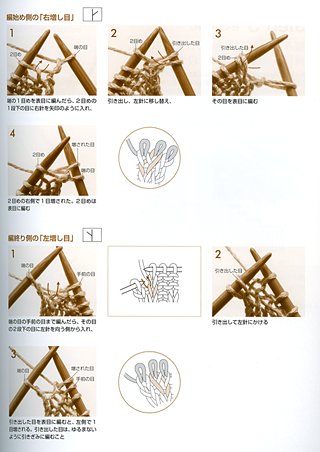
Comments
My daughter just applied for summer school and her first choice is Japanese 1. I'll see if she can learn knitting terminology, too!
She's picked up a lot of Japanese from anime/manga, and I know there is one character who is always knitting...
Is your neck better yet?
Posted by: Sylvia | January 18, 2007 2:45 PM
Hope your neck is feeling better... I am sure your Habu yarn is calling your name.
ROFL.... I absolutely loved your comment about the Prince of Knitting books. There is really no way I would knit anything in any of his books either. Well, maybe the kids knit books, but I haven't seen those in person just read the descriptions.
Just for note: My favorite lys just told me that there is actually a traveling teacher who is teaching classes for Reading and Understanding Japanese Patterns. She is offering a 1 day and a 4 session class. Don't really know anymore about it, one of their reps told them. They promised to look more into it for me so if I get any more info I will let you know.
Posted by: kitty kitty | January 19, 2007 10:08 AM
oooh lovely patterns, thanks for sharing :) wil definitely add this to my wishlist.
Posted by: vanessa | January 24, 2007 11:03 AM
Oh I just stumbled onto your website after typing in Japan LYS and knit. I'm going to Japan (for the 10th time? Can't remember) and I need to find some info on Tokyo yarn shops. Alas, I only saw LOVELY pics of cardigans and sweaters here. :-) You also mention... Hirose? My mum has met him and they *vaguely* know eachother. I must say that, even though I agree his style is quite baroque, I'm still majorly impressed with his stuff. :-)
Posted by: nathalie | January 27, 2007 1:16 AM
Hi. I am writing from Tokyo. It is interesting that someone who lives in the U.S. tried to read Japanese knitting patterns/books. I guess you are trying to read the Japanese knitting book is similar as my effort to read US patterns. I am now admired to be knitting a cardigan which I found the design in an American knitting magazine. I found the magazine in Kinokuniya in Tokyo. I am surprised that US/English knitting pattern DOESN'T have CHARTS!! All are explained by texts--WORDS WORDS! As you show on your blog, Japanese knitting pattern shows in symbols. Then, the symbols explained how to knit step-by-step pictures. So, when I knit the US English pattern, I am sometimes stopped and thought what the English descriptions tell about. I open a Japanese knitting symbols reference book and try to find which is the same. Knitting terms in foreign language aren't easy and have to learn by myself. Are you, too???!!
In Japanese knitting pattern, the charts are always shows in Right Side. So, you have to read the opposite of the symbols when knit in Wrong Side. In the wrong side, the chart doesn’t show the actual knit symbols. When I started to knit US pattern, Mr. Tatao ‘s knitting website was a great help. He explained the differences between English and Japanese knitting. He also have English version and explained how to read and knit Japanese knitting patterns. He is a quite well-known. Maybe you know it. But if you don't know, I hope you like the site http://www.tata-tatao.to/knit/e-index.html
Posted by: Yukie | February 11, 2007 1:53 AM
"Yuzawaya" is the biggest yarn and craft shop in Tokyo. Maybe in Japan. They have all. It's in Kamata on Yamanote line; but the shop in Kichijoji on Chuo line is bigger and better. Both shops are located next to the stations, you won't miss.
Posted by: Yukie | February 11, 2007 2:10 AM
"In Japanese knitting pattern, the charts are always shows in Right Side. So, you have to read the opposite of the symbols when knit in Wrong Side. "
Isn't that always the case? I'm a little confused. Hopefully someone can tell me as I bought two pattern books in Japan. I think, not sure though, they are the Vogue Pattern books. Maybe I'll buy'em again (in English)? Maybe... :-)
Posted by: nathalie | February 17, 2007 5:22 AM
Yes, it is always the case. Japanese knitting pattern charts are always shown in right side. A chart is a blueprint -- the right side of knitting fabric you made is the same as the chart is written. Japanese knitting charts are completely standardized by JIS (Japanese Industrial Standards Association) and make everybody understand. I had not doubted until recently that this expression is the standard of all over the world. OH, I forgot one thing! Not always but English pattern often use a CIRCULAR needles and work rounds!! (This is another surprise for me because most of us don’t use a circular needle to make bodies and sleeves.) If you work circular method and knitting rounds, you will always work the stitch symbols what they are. Read“right to left” on the chart. But if you turn, and then work back-and-forth knitting, you must work the opposite of the symbols shown when wrong side rows (even numbers). The actual working symbols are not written. In addition, you have to read the symbols left to right. Next, work the same as the symbols written when you do right side rows (odd numbers). This time, you must read chart right to left For example: 1st row symbols are [- I –] , 2nd row symbols are also [- I –]; you should work p1 k1 p1 in 1st row, k1 p1 k1 in 2nd row.
I like Flubuff’s selections. I use and have the same knitting techniques book as Flubuff have introduced on this blog, “Shin-Boubari Ami” (ISBN 4-529-0297-1); it is a very good Japanese knitting bible and told all basic for making projects.
Can you understand my English explanation? Hope you won’t be confused anymore by my last comment.
Posted by: YUKIE | February 21, 2007 11:28 AM
Hi all,
It is funny and interesting that I am Chinese, live in LA, USA and also like knitting!! We all have the same language "knit".
I had the basis knit knowledge when I was around 12 and just picked it up again after my move to LA since two years ago. When I was in Hong Kong, I learnt both English/American text way and Japanese charting for knit. Both have the advantages, Japanese chart is very easy and clear to understand, line by line and step by step and English/American way is more details to explain the techique, and now, I can find the American book added the chart too ( as speically for patterns).
I like both ways when the results came out the same: beautiful and lovey germent!!
Can anyone tell me where to buy the Japanese Knitting magazine in LA, USA? Thanks.
Posted by: MamaG | June 10, 2007 7:14 AM